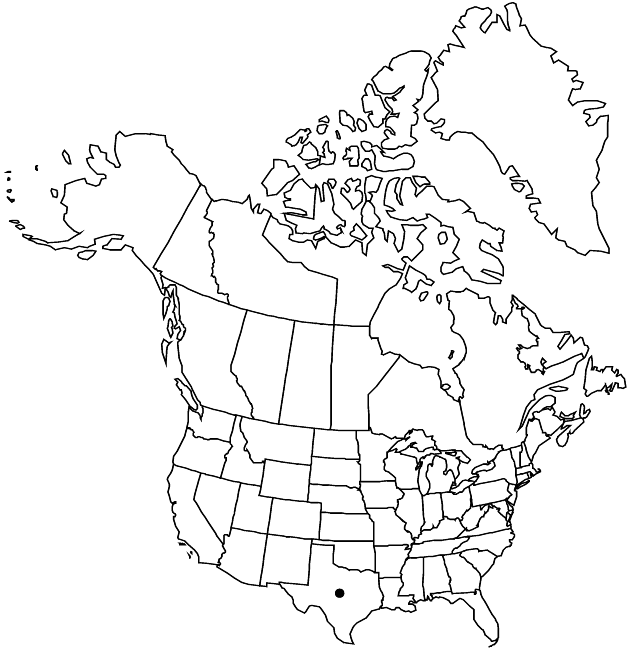Pyrrhopappus pauciflorus
in A. P. de Candolle and A. L. P. P. de Candolle, Prodr. 7: 144. 1838.
Annuals (sometimes persisting), 5–40 (–80+) cm. Stems seldom, if ever, scapiform, branching from bases and/or distally, usually sparsely to densely pilosulous proximally, sometimes glabrous. Cauline leaves 1–3 (–5+), proximal mostly oblanceolate to lanceolate, margins usually pinnately lobed, sometimes dentate or entire, distal ± lanceolate, margins usually pinnately (3–) 5–7 (–9+) -lobed. Heads (1–) 3–7+ in loose, corymbiform arrays. Calyculi: bractlets 8–13 in 1–2 series, deltate to subulate, 3–5 (–6) mm. Involucres ± campanulate to cylindric, 16–22 mm. Phyllaries 13–21. Florets 50–60; anthers 3.5 mm (pollen equatorial diameters 43–46 µm). Cypselae: bodies reddish-brown, 4–5 mm, beaks 7–9 mm; pappi 7–9 (–10) mm. 2n = 12.
Phenology: Flowering (Feb–)Apr–May.
Habitat: Disturbed sites, prairies, clay soils
Elevation: 10–500 m
Distribution

Tex., Mexico (Coahuila), Mexico (Nuevo León), Mexico (Tamaulipas)
Discussion
Some specimens of Pyrrhopappus from the Panhandle of Texas and from New Mexico are intermediate for traits used here to distinguish P. pauciflorus and P. rothrockii. Some authors (e.g., B. L. Turner and K. J. Kim 1990) have included P. rothrockii within P. pauciflorus.
Selected References
None.
Lower Taxa
"fine" is not a number.